Clever and innovative gameplay twists can come from the humblest of sources. For the city builder subset of strategy games, the relationship between the environment and human development is an exciting well of potential for creative mechanics that is yet to be fully explored. So what does Erik Rempen’s Kainga bring to the table?
Kainga is a small-scale tribal village builder with a roguelike mission structure and metagame. The highlight aspect of this indie game is its emphasis on adaptable strategy and construction of flexible settlements that respond to various weather conditions, terrain features, and wildlife. As a result, Kainga has a great conceptual game core in its current Early Access state with a potential bright future ahead of it.
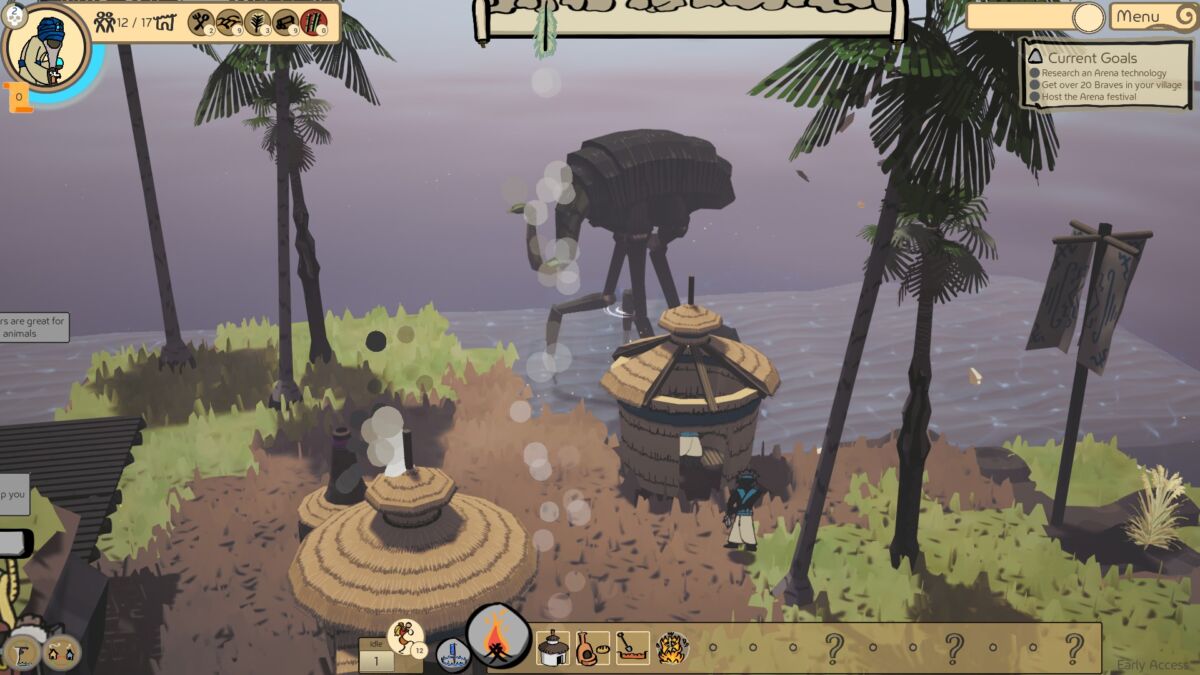
The game’s graphical style helps set it apart from other city builders with its vibrant, minimalistic, and colorful 3D geography that also efficiently presents at-a-glance information to the player. The environmental design is also a standout with each set of challenge zones presented with their own visual flair, layout, and strategic conundrums.
Though the menus, fonts, maps, and unit models go for an even more simplistic 2D aesthetic style that’s almost reminiscent of old online Flash games, this approach to the UI and character design work surprisingly well in tandem with the clear geography. The creature designs are all interesting and suitably outlandish, like the Trudger and Walker, enough to give Kainga its own charm, as though it’s representing a kind of mythologized historical past or an entirely separate fantasy land. There is some graphical wonkiness when creatures traverse the land as they can get stuck on extreme terrain features, but, on the whole, their behavior helps effectively ground Kainga’s setting.
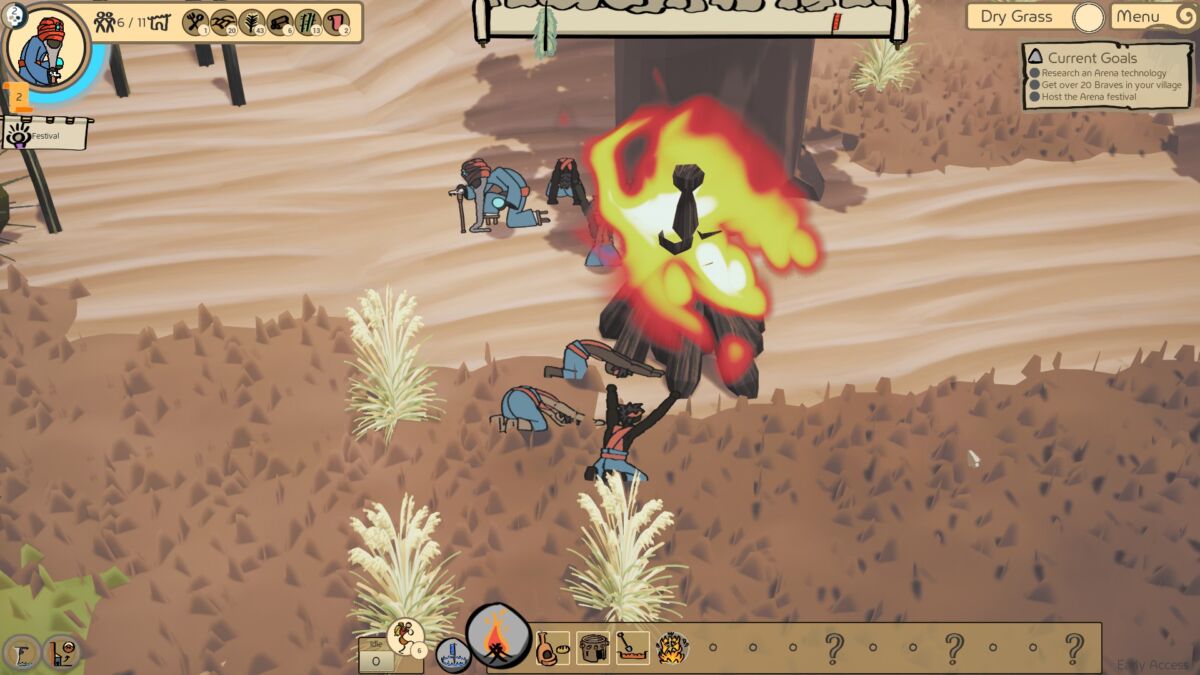
Even in its current state, Kainga has a great amount of content, including three distinct functioning biomes and a large number of missions and challenges that all require unique strategies and tactics to overcome. There’s also a huge amount of technology to unlock within Kainga’s metagame, which rewards exploration and experimentation. In essence, the roguelike component of unlocking new items, structures, and contraptions consistently freshens up each playthrough, with the randomized in-mission technology system keeping players thinking creatively when dealing with the terrain.
Aside from the staple techs of other city builders, such as housing, resource production, and military, what gives Kainga’s village development an edge is the arsenal of strange and clever gadgets players can unlock to deal with various weather conditions and environmental behavior. Some of the most creative are a cloud popper balloon that dissipates incoming rain clouds or saddles and rigs that can be built on the backs of tamed creatures. Kainga gives players a sandbox’s worth of combinations to try and optimize.
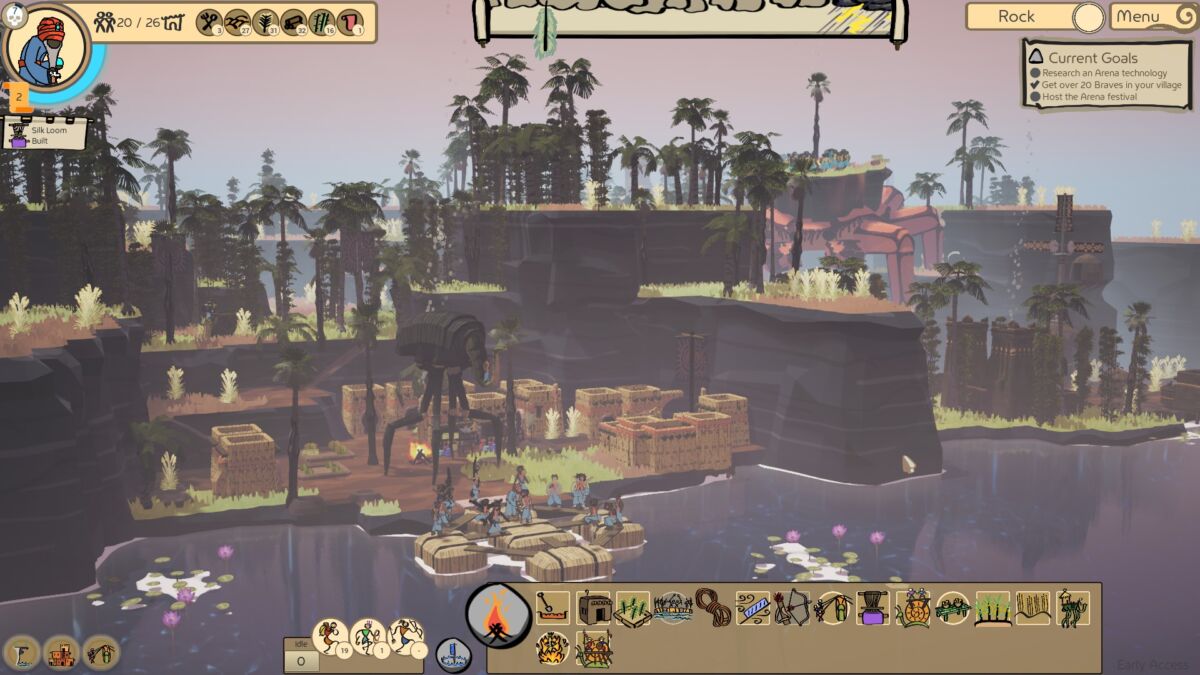
Unfortunately, while Kainga shows plenty of potential in its gameplay concept, it could definitely benefit from tighter pacing, technical aspects, and overall flow of the game. Luckily, Kainga’s technical issues, like unit pathfinding, combat controls, and some quest progression bugs, while notable, seem relatively easy to deal with and the developer has already demonstrated that they work quickly and that these issues will be addressed promptly, as they’ve been able to fix a mission reward bug I encountered during my playthrough within a day of its discovery.
The biggest issues Kainga faces are its level of challenge and NPC AI behavior. Though the game includes a healthy number of mission types, a majority of them feel too easy and leave each run feeling unsatisfying or incomplete. I caught myself on multiple occasions feeling that just as I was getting into the groove of establishing a self-sufficient village, the mission basically ended because of how easy it is to complete the mission objectives.
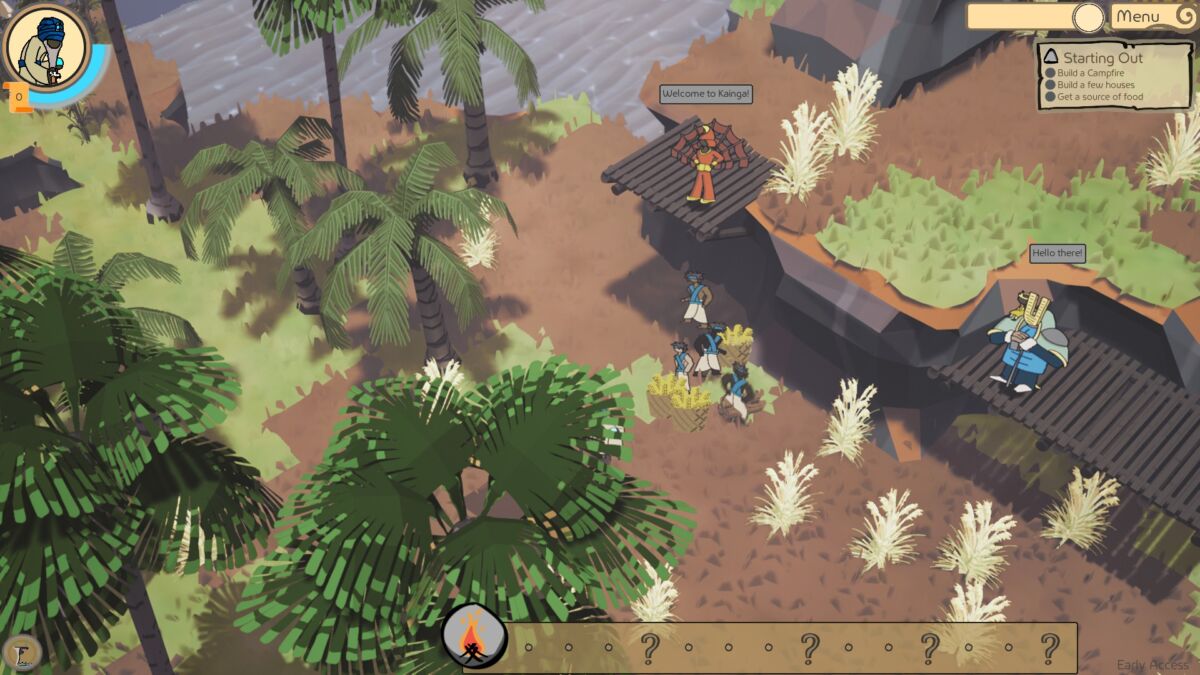
The extremely passive NPC AI definitely doesn’t help Kainga’s awkward mission pacing. In any given mission, players will end up interacting with up to two rival villages through a simplistic diplomacy system – you either pay tribute to a village when requested or they attack you.
The in-game tutorial states that when you give NPC villages the requested resources, they technically grow and develop, yet this isn’t shown clearly during gameplay. If the player ends up engaging in combat with villages, the AI simply beelines a party of their Braves straight for your central hearth, with the intent of knocking out the village Thinker (essentially the scientist and head of the village whose loss means an automatic mission failure), but they don’t employ any clever or challenging tactics to overcome the player’s defences.
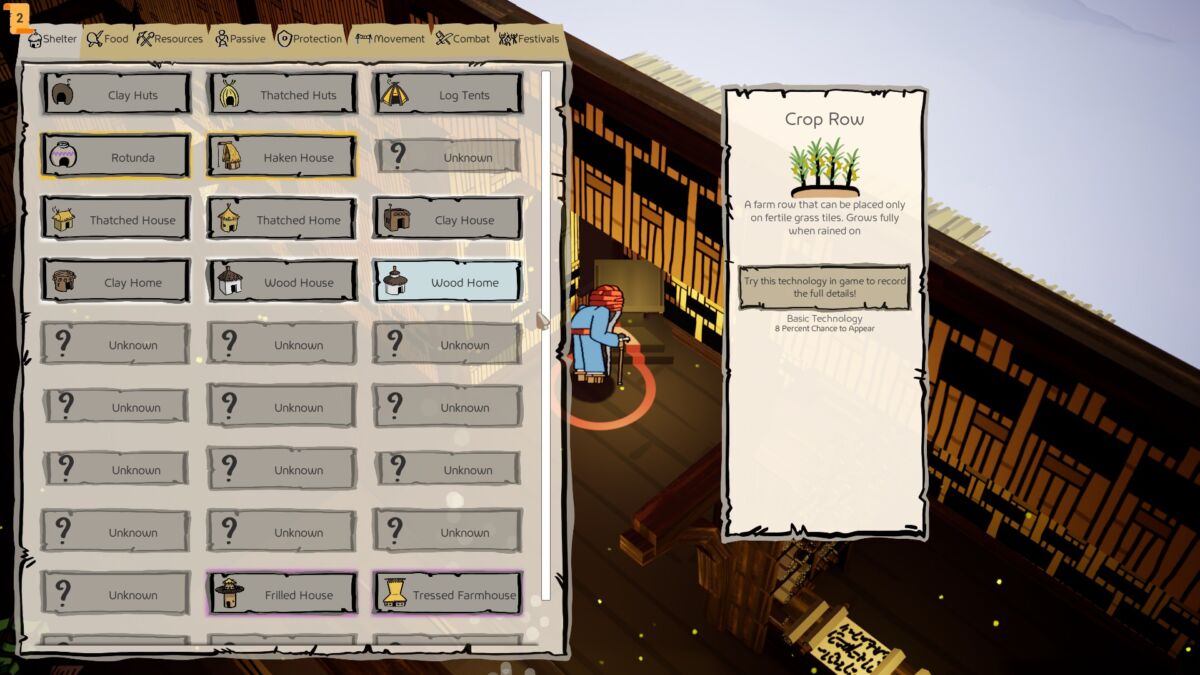
In addition, the NPC villages will occasionally send parties of workers to attack the player’s Thinker when they’re sent to points of inspiration to invent new technologies. These raider parties are usually more of a nuisance and can’t meaningfully block the player from gaining new technologies or simply across the entire map.
It raises the question of why the other villages don’t send their own Thinkers and larger parties to collect new technologies for themselves and dynamically evolve alongside the player. If Kainga can solve these village interaction and AI behavior issues, then we could truly have something special on our hands, as it would not only be the player adapting to the world, but also the world in turn responding to the player’s actions, creating a far more intricate and dynamic game world.
Kainga has a great core idea that emphasizes how intricately tied urban and technological development is with the physical features of the land, something that many city builder games often leave by the wayside. It’s impressive that it has succeeded in nailing its concept down quite well and will truly be a fantastic game if the developer takes the time to iron out bugs and tighten up the gameplay loop. As it currently stands, Kainga is a game worth paying attention solely for its innovative approach to city builders alone.
A PC key was provided for the purposes of this preview.
READ NEXT: Kainga Strategy Guide: Thinkers, Karma, Terrain, and More
Some of the coverage you find on Cultured Vultures contains affiliate links, which provide us with small commissions based on purchases made from visiting our site.

